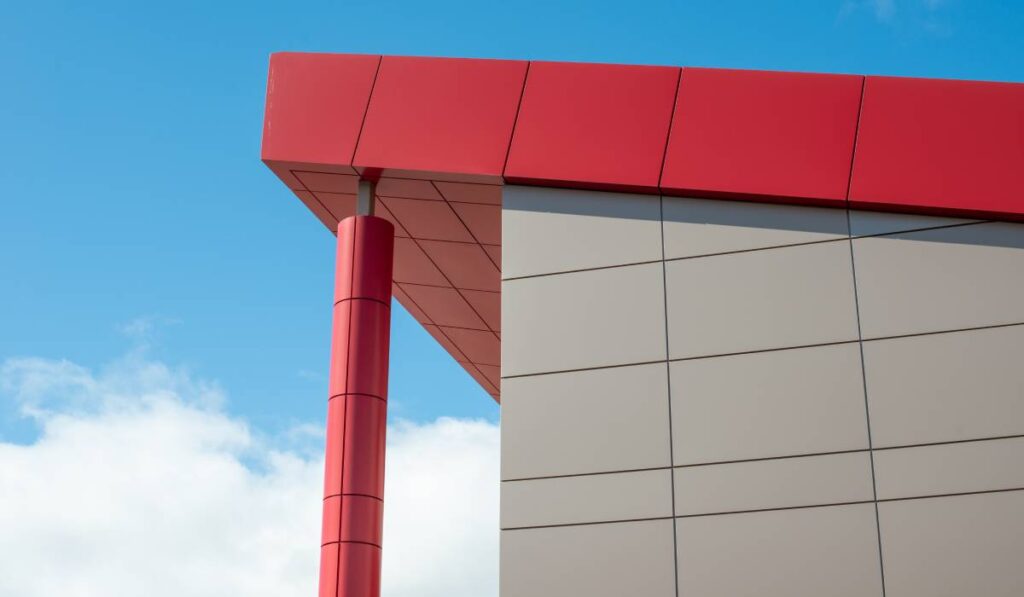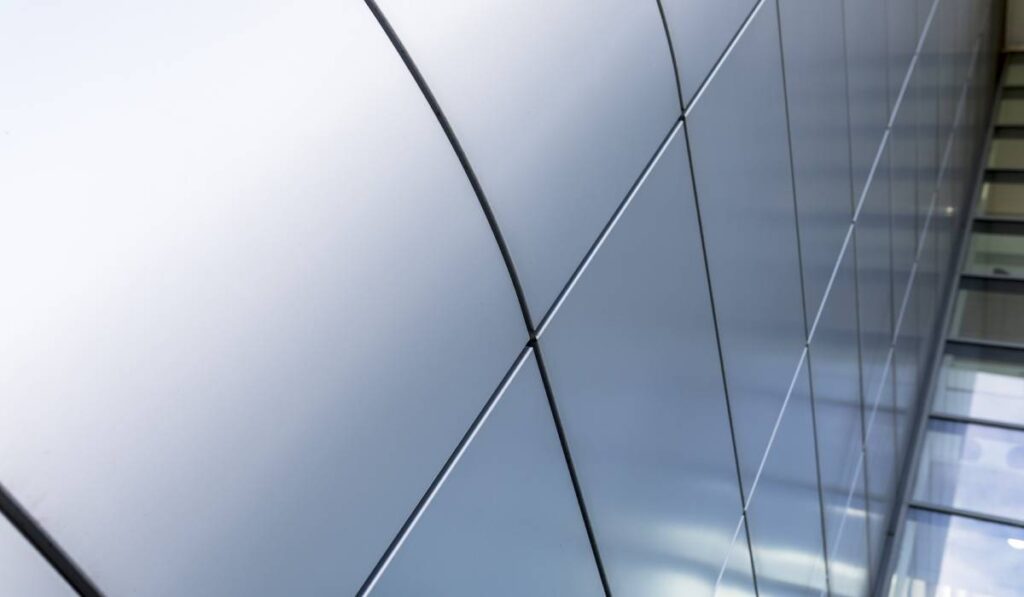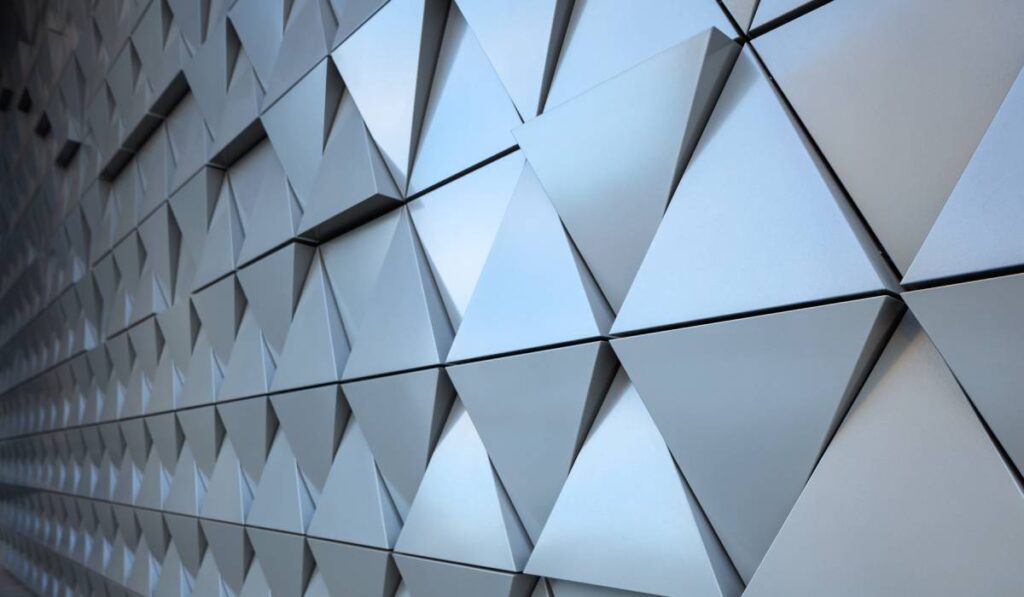5 reasons to use aluminium rainscreen cladding in your next project
Aluminium has been a staple building material for more than 100 years, and with its robust, long-lasting, and strikingly aesthetic nature, it’s easy to see why. Having evolved heavily over the years, one of the most popular uses of aluminium in modern building design is rainscreen cladding. Serving both functionality and visual appeal, aluminium rainscreen cladding acts as a durable protective blanket over commercial buildings and contemporary homes alike.
Balancing functionality with aesthetics has never been easier
Whether you are an architect designing a modern home or working on a commercial development, aluminium rainscreen cladding can significantly influence the overall look, durability and efficiency of your project – and for the better. In this article, we help you to navigate the use of aluminium as a cladding material and the wealth of benefits it can bring.

Understanding aluminium rainscreen cladding
In order to understand how aluminium rainscreen cladding can benefit your project, it is first important to familiarise yourself with the manufacturing and installation process. Ensuring that you choose the correct treatment or coating on your aluminium during these stages will determine the longevity of your building design. Learn more below:
What is it?
Aluminium rainscreen cladding is a type of exterior cladding system used in construction to create a ventilated gap between the cladding and the exterior wall of the building. This air gap serves as a drainage and ventilation cavity, allowing moisture to escape and air to ventilate, preventing moisture buildup and potential damage to the building structure.
How is it made?
Manufactured through a process of fabrication, coating and assembly, aluminium rainscreen cladding features sheets or coils of aluminium, which vary in thickness based on the specific project requirements. These are cut into shape and treated or coated to achieve the desired aesthetic. At Alanod, we can offer powder-coated, painted, anodised, or lacquered aluminium, along with plain, raw aluminium.
How is it installed?
Once the treatment or coating process is complete, it is time to begin assembling the rainscreen cladding. This typically involves attaching the aluminium to a supporting substructure or framing system using mechanical fasteners, adhesives or interlocking systems, depending on the scope of the project. As mentioned above, these are always installed with a gap between them to allow for ventilation and drainage.

Benefits of using aluminium rainscreen cladding
As the modern era of building design continues to evolve, there is no better time to incorporate new materials into your construction projects. As a frontrunner, aluminium rainscreen cladding offers a wealth of benefits, including the following:
1. It's cost-effective and easy to install
As an architect or developer, construction costs play a vital role in any project. When choosing aluminium rainscreen cladding, you can benefit from cost-effectiveness not only during the initial installation but also in the years that follow.
Due to the lightweight nature of aluminium, the installation process is far easier and quicker compared to other materials, lowering labour costs. Once installed, aluminium can withstand harsh weather conditions and temperature fluctuations without degradation, meaning that repair and replacement costs are minimised over time.
Along with installation on new projects, aluminium rainscreen cladding is also a popular – and affordable – method of revitalising old buildings. Its ease of installation and lightweight benefits mean it can be added without altering or strengthening existing structures, offering a lower-cost yet highly effective alternative to a complete renovation.
2. It's versatile, with many design options
Many assume that aluminium cladding is limited to a traditional silver aesthetic, but this couldn’t be further from the truth.
As mentioned above, aluminium can be treated with powder coatings, specialised paints or anodising to create your desired effect. While powder coatings and painting are best suited to those who wish to achieve a bright block colour, anodising creates a metallic finish that reflects light. When ordering aluminium with Alanod, we will always run through the various options available, ensuring that panels fit your specifications to the finest details.
As well as colour and finish, the size, shape and profile of aluminium can also be customised without impacting its quality. For example, not only can aluminium be cut into bespoke shapes, but several profiles are available to create a flat, smooth wave or corrugated effect.

3. It's lightweight yet robust
As previously discussed, aluminium rainscreen cladding is incredibly lightweight; however, this certainly doesn’t mean it cannot withstand the elements. Aluminium is resistant to corrosion, rot and pests and will not deteriorate when exposed to adverse weather conditions, temperature fluctuations or UV exposure. Its aesthetic appeal and structural integrity will remain intact for several years, ensuring a reliable, robust and durable barrier over your building.
Aluminium also has its benefits when it comes to fire safety. As a naturally fire-resistant material, aluminium rainscreen cladding can help mitigate the spread of a fire, provided that the correct fire safety protocols have been followed during installation and systems have been tested to ensure they meet the latest fire regulations.
4. It's a low-maintenance material
Unlike other materials, aluminium does not need regular painting, sealing, or repairs. It is also corrosion-resistant, thanks to the protective oxide layer that forms naturally when exposed to air. Together, this makes aluminium an incredibly low-maintenance solution that simply requires periodic cleaning to keep up with aesthetics. When the surface does begin to build dirt, contaminants can be cleaned quickly and effectively through jet washing.
5. It helps your building become more sustainable
In the world of modern building design, sustainability plays a vital role in decision-making. Aluminium remains one of the leading environmentally friendly materials for several reasons, the first being its ability to make buildings more energy efficient. Installing aluminium rainscreen cladding provides an extra layer of insulation, helping to reduce heat loss during the winter while minimising heat gain in warmer climates.
In terms of recyclability, aluminium rainscreen cladding can be completely recycled after use without impacting its original quality. In fact, at Alanod, many of our metal surfaces are manufactured from recycled aluminium. Discover more about the use of aluminium in sustainable building design in our previous article.

Innovating architecture with aluminium rainscreen cladding
From its lightweight nature to its corrosion resistance, aluminium rainscreen cladding offers a wealth of attractive traits for both commercial and residential building design. By choosing this material, not only do you elevate the visual appeal of your project but also ensure long-term structural integrity and environmental responsibility.

